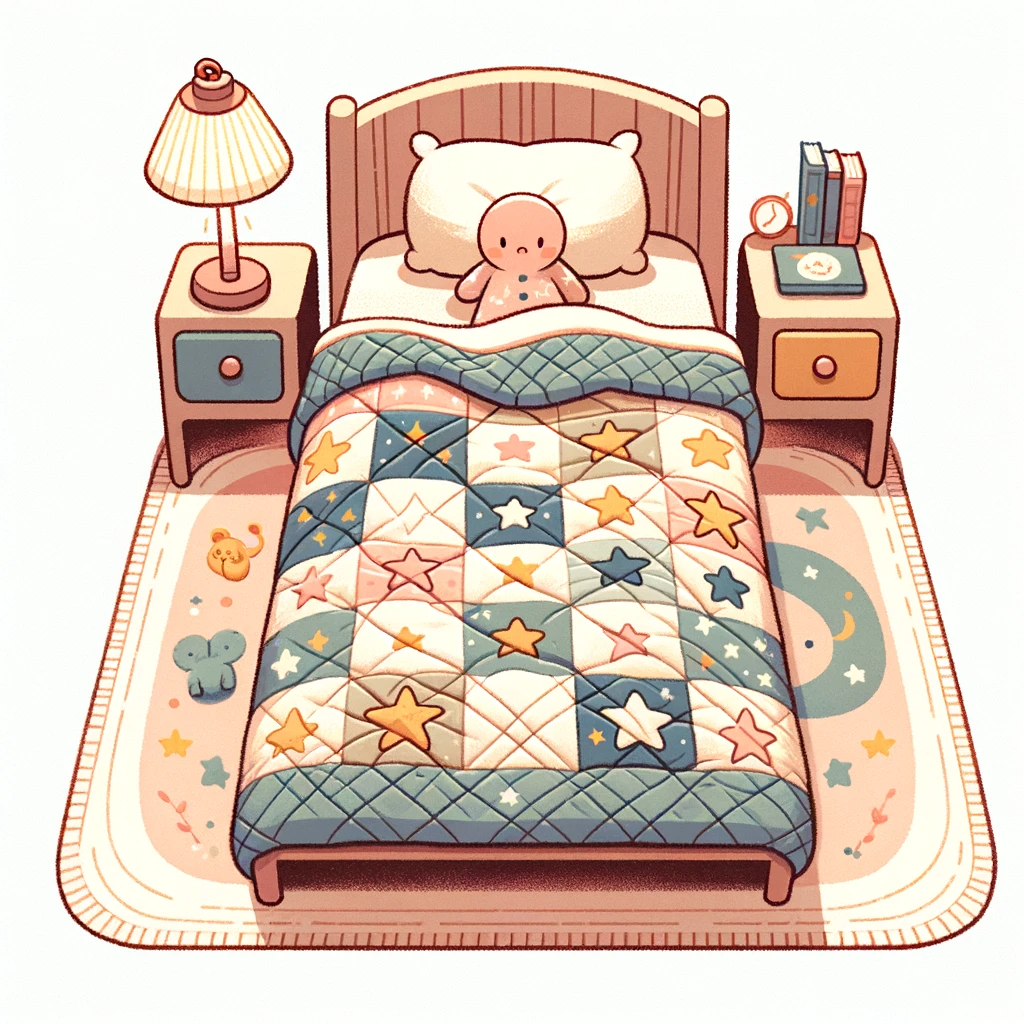Creating a Kid-Friendly Bedroom: Tips for a Fun and Functional Space

Forward Plan
When creating a kid-friendly bedroom, it’s crucial to consider the long-term needs of the space. This involves envisioning how the bedroom will evolve as your child grows. Planning for flexibility allows you to adapt the playroom to suit your child’s changing interests and activities effortlessly.
To cater to future needs, invest in furniture that can be repurposed or modified as your child matures. For instance, a bed with adjustable height settings can accommodate growth spurts, while modular storage units offer versatility for organizing toys and belongings at different stages of development.
Creating a space that can easily adapt to changing interests and activities involves incorporating versatile decor elements and desk. Consider using removable wall decals or murals that can be swapped out as your child’s preferences evolve. Flexible seating options like bean bags or floor cushions provide comfort for various activities such as reading, playing games, or socializing with friends.
Think: Cleanability
When creating a kid-friendly bedroom, it’s essential to prioritize cleanability. Here are some key points to consider:
- Choose easy-to-clean flooring and surfaces for children: Opt for modern, low-maintenance flooring options like laminate or vinyl that can withstand spills and stains. These choices offer both style and practicality.
- Opt for washable, durable fabrics for bedding and upholstery: Selecting bedding with removable, machine-washable covers ensures ease of cleaning in case of accidents. Incorporating stain-resistant upholstery fabric makes an ideal solution for maintaining a tidy space.
- Minimize clutter to make cleaning easier in a kid’s room; having the right storage elements can help keep children’s belongings organized and off the floor. Utilize bins, shelves, and under-bed storage as smart choices to maintain cleanliness effortlessly.
Protect Furniture
Invest in sturdy, durable furniture that can withstand active play. Look for solid wood or metal frames for beds and dressers to ensure longevity. Consider the weight capacity of shelves and wardrobes in a small kids bedroom to accommodate the potential load of toys and clothes.
Use furniture protectors to prevent damage from spills and roughhousing. Utilize adhesive felt pads on the bottom of chair legs, tables, and other furniture pieces to shield floors from scratches caused by movement. This simple addition can significantly extend the lifespan of your furniture.
Consider multi-functional furniture to maximize space and functionality. Opt for a bed with built-in drawers or shelving units underneath to provide additional storage without occupying extra floor space. Convertible cribs that transform into toddler beds can be practical long-term investments.
Keep Things Fun
Incorporating playful elements like themed decor or colorful accents can instantly transform a kid’s bedroom into a fun and imaginative space. Utilizing vibrant colors, whimsical patterns, and themed bedding in a room can create an environment that feels exciting and inviting for children.
Designated play areas within the bedroom provide kids with their own space to unleash their creativity. Whether it’s a small tent for imaginative play, a mini art corner for crafts, or an area for building blocks and puzzles, these spaces encourage active engagement and stimulate the imagination.
Interactive elements such as chalkboard walls not only add a touch of novelty but also serve as platforms for endless creativity. Reading nooks equipped with cozy cushions, shelves filled with books, and room can inspire a love for reading from an early age.
Consider the Design of the Rest of Your Home
When creating a kid-friendly bedroom, it’s crucial to ensure that the design seamlessly integrates with the overall style of your house. By maintaining a cohesive aesthetic in your home, you can achieve a harmonious flow throughout your room.
Balancing kid-friendly elements with your home’s existing decor is essential. Incorporating playful and colorful accents into the bedroom while maintaining consistency with the rest of the house and ideas will create a space that feels both fun and cohesive.
Consider using color schemes or patterns in the bedroom that echo those found in other areas of your home to achieve this. For instance, if your living room features neutral tones with pops of color, you might carry these same colors into your child’s bedroom through bedding or wall art.
Creating a seamless transition between spaces, such as room, ensures that there is no jarring contrast as one moves from one area to another within your home. This can be achieved by using similar design elements such as furniture styles or decorative accessories throughout different rooms.
Avoid Trends When Designing Kids’ Bedrooms
When creating a kid-friendly bedroom, it’s crucial to focus on timeless design elements that can evolve with your child. By avoiding overly trendy themes or decor, including the bed, you ensure that the room remains relevant as your child grows. Opt for classic and versatile pieces that can stand the test of time.
Here are some reasons why you should steer clear of trends when designing kids’ bedrooms:
- Longevity: Timeless bed designs have staying power and won’t require frequent updates as your child ages.
- Flexibility: Classic decor allows for easy transitions from one stage of childhood to another without major overhauls.
- Cost-effectiveness: Investing in timeless pieces for the room means less money spent on redecorating due to changing trends.
Less is More for a Restful Space
Embracing minimalism in a kid’s bedroom can significantly contribute to creating a calming environment. By keeping the room uncluttered, you promote relaxation and tranquility, which are essential for bedtime routines. Prioritizing essential furnishings and decor in the room helps avoid overwhelming the space and allows for more open areas where little ones can move freely.
In a small bedroom, simplicity is key. A clutter-free room not only looks visually appealing but also provides an opportunity for children to play without feeling restricted by excessive furniture or decorations. When selecting a color palette for a room, opt for soothing tones like soft blues, greens, or pastel hues to foster a serene atmosphere.
Consider incorporating storage solutions that maximize vertical space in the room—utilize shelves mounted high on the wall or ceiling to keep toys and books organized while maintaining an unobtrusive ambiance. Ensure that any decorative elements in the room are securely fastened to prevent accidents.
Switch Out Soft Furnishings
Updating soft furnishings regularly in your child’s room is essential to reflect your child’s evolving interests. By doing so, you can keep the bedroom decor aligned with their current preferences. For instance, if your child transitions from a love for dinosaurs to an interest in outer space, swapping out themed throw pillows and rugs can instantly transform the room.
Introducing new colors or patterns through throw pillows, rugs, and curtains is a simple yet effective way to revamp the bedroom without undertaking major renovations. Consider incorporating vibrant hues or playful designs that resonate with your child’s personality and style in their room.
Seasonal changes provide an excellent opportunity to give the room a fresh look. During spring and summer, opt for lighter fabrics and brighter colors that evoke a sense of warmth and cheerfulness. In contrast, fall and winter call for cozy textures like faux fur or knitted blankets in deeper tones such as rich blues or warm oranges.
Consider a Work Space
Incorporating a dedicated study area in your kid’s bedroom is essential for fostering productivity and creativity. This room can serve as a designated spot for homework, reading, and engaging in artistic activities. By having this separate area, children can develop good study habits and have a sense of ownership over their learning environment.
When selecting the desk and chair for the workspace, prioritize ergonomically designed furniture to ensure comfort and promote better posture during long periods of studying or creating. A comfortable chair with proper back support can prevent discomfort or potential health issues caused by poor seating positions.
Personalizing the workspace with organizational tools such as shelves, drawers, or bins helps keep clutter at bay while promoting tidiness. Incorporating inspiring decor elements like motivational posters or colorful stationery can create an environment that stimulates creativity and enhances focus.
Make it a Retreat
To create a kid-friendly bedroom that serves as a retreat, consider incorporating the following elements:
- Cozy Nook: Designate a cozy nook with soft pillows and blankets for your child to unwind, read, or engage in quiet time. This space can be adorned with their favorite books and stuffed animals to make it inviting.
- Soothing Elements: Introduce soothing elements such as soft lighting, calming wall murals, or nature-inspired artwork. These additions can contribute to creating a peaceful ambiance within the room.
- Comfortable Seating: Incorporate comfortable seating options like bean bags or floor cushions to provide your child with an area where they can relax and feel at ease.
Frequently Asked Questions
How can I create a kid-friendly bedroom that is easy to clean?
To create a kid-friendly bedroom that’s easy to clean, consider using washable, durable materials for furniture and fabrics. Opt for surfaces that can be easily wiped down or machine-washed. This will make it simpler to maintain cleanliness and hygiene in the space.
What are some ways to protect furniture in a kid-friendly bedroom?
Incorporate protective measures such as removable covers for upholstery, stain-resistant finishes on wood furniture, and soft bumpers on sharp edges. These strategies help safeguard your furniture from spills, scratches, and other wear-and-tear caused by active kids.
How can I design a restful space in my child’s bedroom while keeping it fun?
You can design a restful yet fun space by incorporating soothing colors for walls and bedding alongside playful accents like colorful rugs or whimsical wall art. This balance creates an environment conducive to relaxation while still fostering creativity and joy.
Should I include a work space in my child’s bedroom?
Including a dedicated work space in your child’s room provides them with their own area for studying or engaging in creative activities. It helps them associate their room with productivity while also allowing them privacy when focusing on tasks.
Why is it important to avoid trends when designing kids’ bedrooms?
Avoiding trends ensures that the room remains relevant as your child grows older. Instead of following fleeting fads, focus on timeless elements that provide flexibility for future updates without requiring major overhauls of the entire room’s decor.



